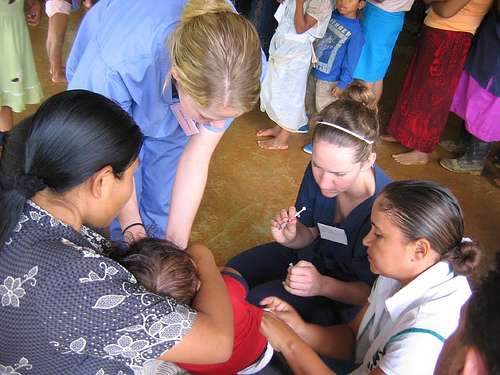Late swine flu outbreak highlights remote community risk

Health professionals are urging pandemic planning be prioritised for remote Aboriginal communities following the confirmation and analysis of an outbreak of the pandemic H1N1 "swine flu" virus in WA in 2013.
Declared over in August 2010 by the World Health Organisation, the pandemic is estimated to have killed more than a quarter-of-a-million people globally.
Yet, three years after the crisis ended, a paediatrician alerted the WA Country Health Service of a new outbreak, one which would see 23 per cent of the remote community's population hit by the virus—the majority being children aged five to nine year.
"The community was likely to have been susceptible to this outbreak for several reasons, one of these being because the annual influenza vaccination coverage was low, at about seven per cent," Kimberley Population Health Unit physician Dr Philippa Chidgzey says.
"Another contributing factor was the apparent naivety to the virus.
"The primary circulating influenza strain across the Kimberley region in 2009 was pandemic H1N1.
"So, it was originally assumed that most of the regional population would have been exposed to the circulating virus at some point.
"However, an examination of the Western Australian Notifiable Infectious Disease Database and consultation with elders found no evidence of H1N1 cases in the community during the 2009 pandemic year."
Ongoing preventative work needed
Dr Chidgzey says the outbreak provides evidence that remote communities potentially isolated from initial waves of pandemics need ongoing preventative measures for many years to reduce susceptibility to novel strains.
Preventative measures include high annual vaccination uptake, hygiene education, interacting with those who are sick, and action plans for health agencies.
She says since this event, clearer reporting and communication procedures for suspected outbreaks have been developed for the region.
"[However,] it remains difficult for remote area clinic nurses and health workers to prioritise activities such as community vaccination when the health service is constantly overwhelmed by acute health care demands," Dr Chidgzey says.
"To prevent influenza outbreaks, it is important for the public health sector to continue to advocate for adequate human resources to ensure community vaccination programs for influenza are implemented effectively.
"Aboriginal people should be a priority in pandemic planning."
The remote community's population size fluctuates but is estimated at 400 to 500 residents, and is currently serviced by a nurse-led remote clinic and visiting doctor service twice a week.
For most of the year it is not accessible by road.















